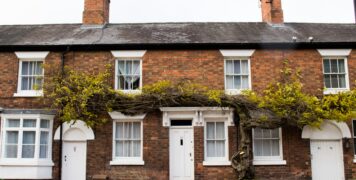Contact
020 4515 6728
info@ccameron.co.uk
Charles Cameron & Associates
Blackfriars Foundry
154-156 Blackfriars Road
London SE1 8EN
What should I consider before becoming a buy-to-let landlord?
October 27, 2021
Information published was correct at the time of writing
--

So you’re looking for a monthly passive income, a diverse investment portfolio and more financial freedom. Becoming a landlord and owning an investment property is one way to achieve this, but only if you choose the right property. Spending too much to acquire it, buying in the wrong area, or taking on more than you can manage are all mistakes that will eat into your profits. From accidental landlords to those wanting to embark on buy-to-let as a business, renting out property can be extremely rewarding. But as with any investment opportunity it’s important to begin with a financial plan and have a clear goal to work towards. So before you take the first steps towards building your property empire, here are some key factors to consider.
BUDGET
One of the biggest factors in which investment property you choose will be your budget. Buy-to-let mortgages typically require a larger deposit than conventional mortgages, so you’ll typically need capital of between 20% and 45% of the property value. For example, if you have £50,000, you can consider properties up to around £250,000. The type of property you can afford for this price will vary greatly in different areas of the country, from a studio flat in some city centres to a house in cheaper regions. Research the local market, look at trends and keep an eye on future investment projects that might be due to affect the area, as well as tenant demand. Added costs such as Stamp Duty Land Tax (SDLT) also need to be taken into account when deciding on your budget. If you’re buying a property in Scotland, you will pay Land and Buildings Transaction Tax (LBTT) and in Wales Land Transaction Tax (LTT) instead of Stamp Duty.
POTENTIAL RENTAL YIELD
While you will want to invest somewhere with the prospect of capital appreciation, achieving good rental yields is also hugely important. You’ll only want to buy a property if it will achieve a rental yield of at least 5%, that is, it will deliver a return of at least 5% of the property value each year in rental income, after expenses. To check if this is possible, you need to know three figures:
1. The property value, how much you plan to pay
2. The annual rental income you expect to achieve
3. The annual costs you expect to pay for mortgage interest, letting agent fees, repairs, etc.
Subtract the annual costs from the annual income. Then divide the property value by that figure. If it is below 5%, the property may not be a good investment. Properties with the highest rental yield tend to be Houses in Multiple Occupation (HMOs), as you’ll have multiple tenants paying to use the same facilities. However, there is often more work to do as you need to manage multiple separate tenancies. Some landlords may prefer a simpler arrangement
TAX MATTERS
Normally, you will be required to pay income tax on what you make from renting out property, but there are certain expenses you can claim, which you can find out through HM Revenue & Customs. On the eventual sale of a rental property, you may be required to pay Capital Gains Tax. If you decide to operate through a limited company, you must ensure you pay the right Corporation Tax. Even if you are a non-resident landlord living overseas for more than six months of the year, you are still eligible to pay tax in the UK.
AGE
Some buy-to-let landlords tend to buy older properties rather than newly built properties. This is because the premium price tag of a new build home can make it difficult to achieve a high rental yield. You’ll typically pay less upfront the older a property is, but that’s because older properties require more maintenance and upkeep. Plus, they tend to be less energy efficient, meaning they can be more expensive to run. So, you’ll need to balance minimising your upfront costs with minimising your ongoing costs.
TARGET TENANTS
You should never make an offer on a property before considering the type of tenants you will rent it to.
Different target tenants have very different needs, which you need to keep in mind when viewing properties. If you plan to rent to families, you’ll need to consider outdoor space and parking. If you want to target a tenant with a large budget, you’ll need to consider premium features, like modern gadgets or access to a gym or concierge.
LOCATION
Location is also closely linked with your target tenants. For example, if you plan to rent to students, it is only worth viewing properties in their preferred neighbourhoods, which are within easy reach of their university. If you plan to rent to young professionals, they usually prefer to be close to the city centre. However, you’ll also need to consider location in terms of your long-term investment, and how much house prices are expected to rise in different areas. It is often wiser to buy in an up-and-coming area than in one that has already achieved its potential.
GOALS
Finally, it’s important to consider what you’re hoping to gain from buying a buy-to-let property. If you’re
looking for an easy-to-manage investment with low and consistent returns, you would choose a different property to someone hoping to maximise their returns by doing a lot of the work themselves.



